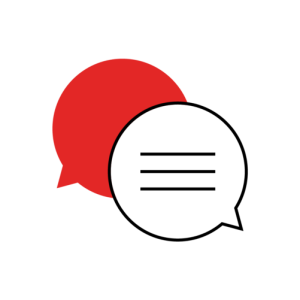Don’t have an account?
Select the donation type you’d like to make
Iron in the balance: too much of a good thing?
If you’re a regular blood donor, you’ll be familiar with the “finger prick” test at each donation. This simple test gives us a snapshot of how your body is handling one part of its iron supply, called haemoglobin. It’s super important for your wellbeing that you have enough iron, but in some cases, too much can cause havoc.
Why do we do the finger prick test?
When you donate blood, you give red cells which are rich in iron and it’s important for your wellbeing that the iron is replaced
If your haemoglobin is too low, or too high, you will not be able to donate blood on the day.
Iron is important to carry oxygen
Iron is at the heart of haemoglobin (which is the stuff that makes your red blood cells red). Haemoglobin uses iron to bind oxygen, and carries it around your body to where it’s needed, and drops it off.
What happens when you don’t have enough iron?
Low iron can lead to low haemoglobin (which is also called anaemia). This may cause you to feel breathless and dizzy, because you have to work harder to get the oxygen around your body. Having low iron means you may have less energy, have trouble focusing, and you may find you can’t exercise as hard as usual.
You normally get your iron from the food you eat. Some foods, such as red meat, are especially rich in iron. But it’s not just about how much iron is in your food, it’s also about how well you are able to absorb it. Some foods help your body capture the iron, while others tend to hide it away so your body can’t absorb it so well.
If you menstruate (have periods), you’re particularly susceptible to low iron levels, due to the regular blood loss associated with menstruation and any previous pregnancies.
Lifeblood recommends people in this category take a short course of iron supplements after each donation
Haemoglobin isn’t the only iron in your body
Altogether, your body contains around 3-4 grams of iron, and only around 1.5-2 g of that is in your red blood cells. Imagine, just for a moment, that iron in your haemoglobin as food on the table.
To help balance your iron needs, there’s an iron storage molecule, called ferritin. It’s part of a system that keeps “spare” iron ready to make new haemoglobin as your body replaces its red blood cells. Now, with haemoglobin being food on the table, imagine ferritin iron as “food in the fridge”.
Can you have too much iron?
Yes! You can have too much of a good thing. Normally, our bodies can adjust to keep our iron levels in balance, absorbing more iron when it’s needed, and storing away excess safely as ferritin.
But there are some cases where people absorb more iron than their body can handle. Although their “fridge” is full, and they have “food on the table”, the food deliveries don’t slow down. Stuff starts going rotten pretty quickly.
Iron overload can be caused by receiving numerous blood transfusions or iron administration, or by genetic factors, including a condition known as hereditary hemochromatosis.
Excess iron can form deposits in places like the liver, pancreas, heart and brain, with serious side-effects.
A win-win situation
A simple solution for iron overload, especially when it’s caused by genetic factors, is to remove blood (along with the iron in haemoglobin) regularly, either in a doctor’s surgery, at a pathology service, or by donating blood.
If a person’s doctor (in Australia) thinks they need blood removed because of iron overload, they can be referred to Lifeblood for what we call “Therapeutic Donation”.
Therapeutic donors need to be referred to Lifeblood by their doctor, using the “High Ferritin” app. Depending on lifestyle and medical considerations, the blood that’s removed during a therapeutic donation can go on to treat patients, so it’s a “win-win” situation.
It’s more common than you think
In 2020, Lifeblood had over 12 000 active therapeutic donors. Together, they donated over 3% of all the red cells we sent to hospitals. If you’ve been diagnosed with Haemochromatosis, there are resources available at Haemochromatosis Australia, a support and advocacy group.

